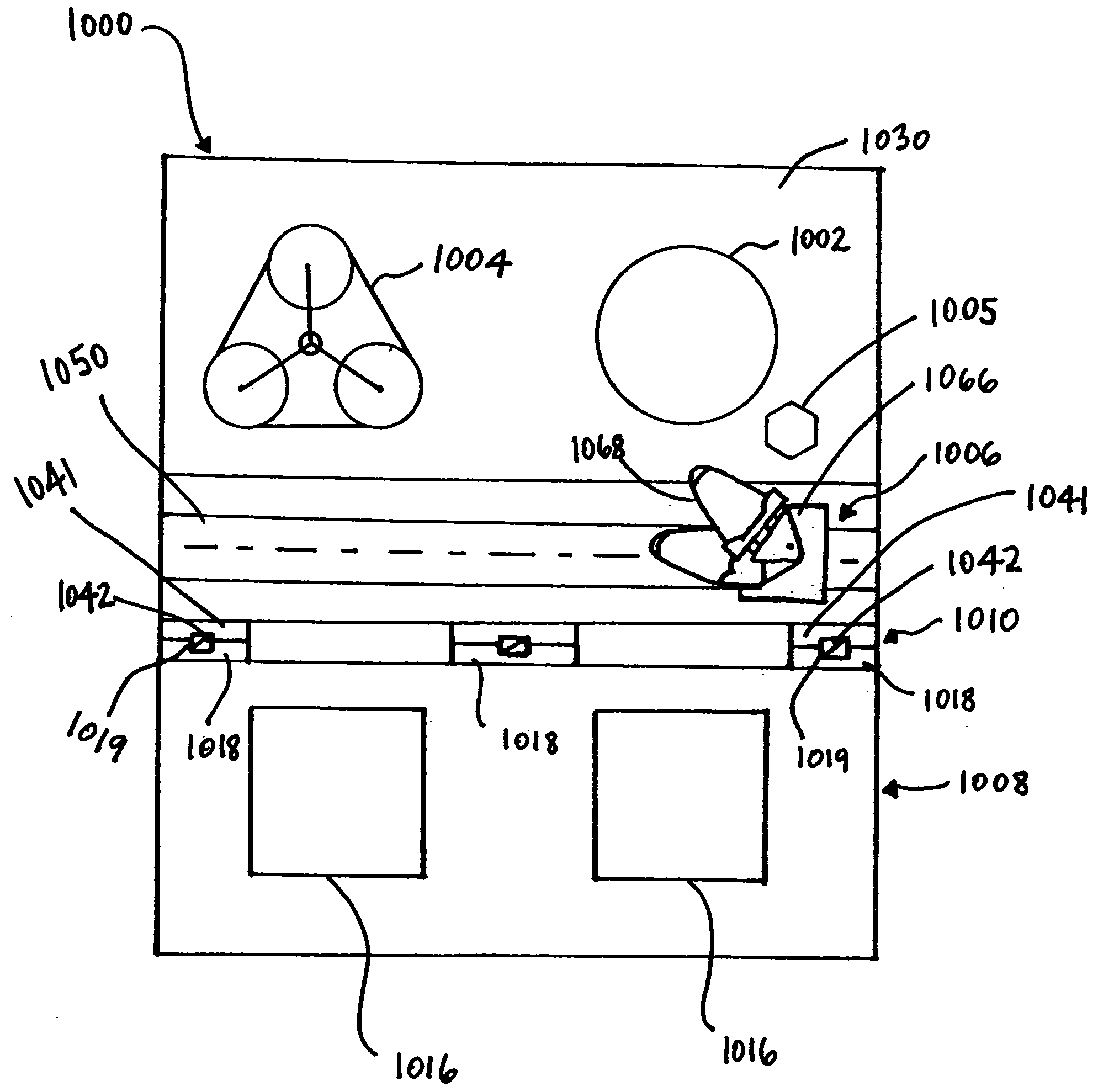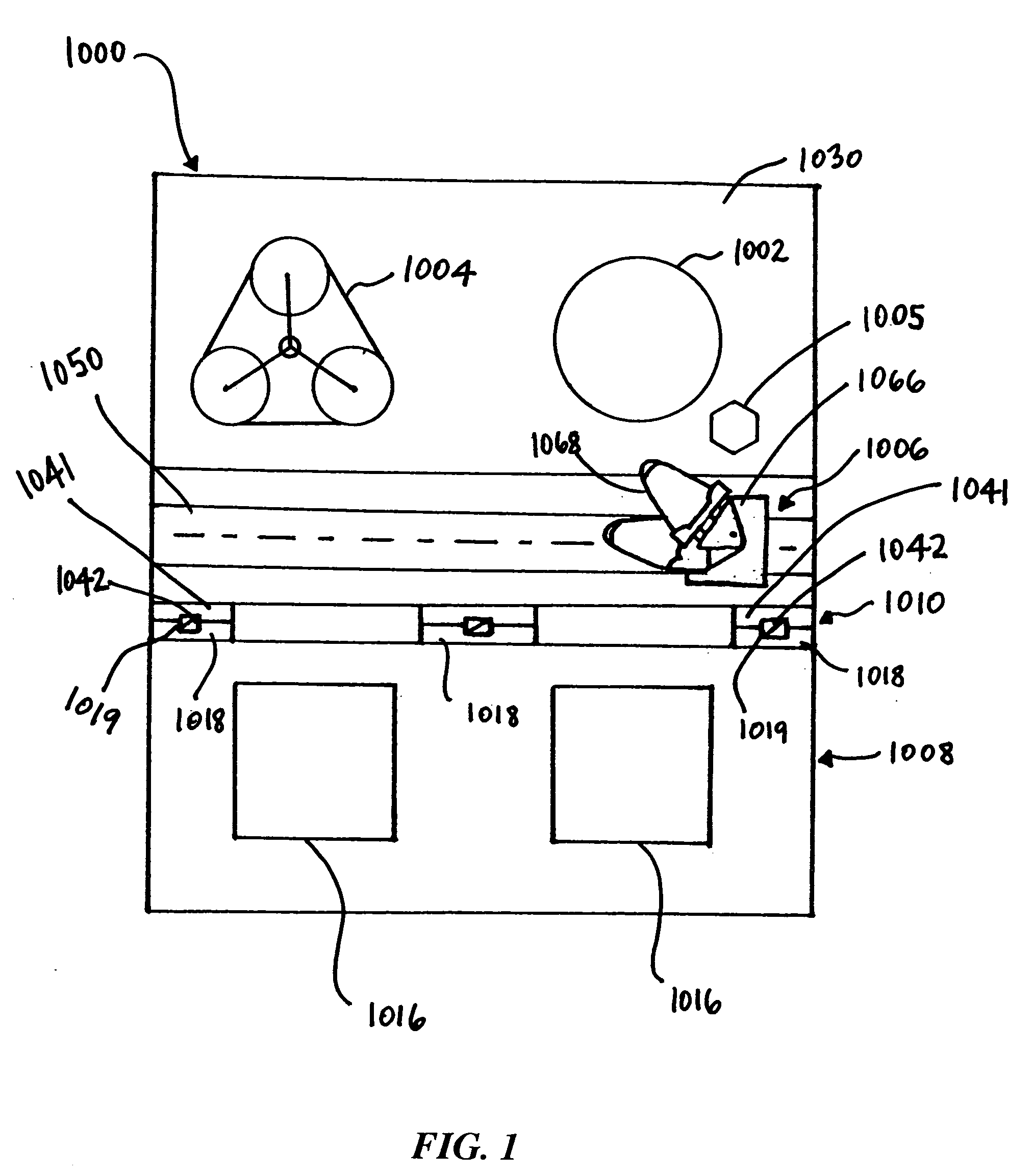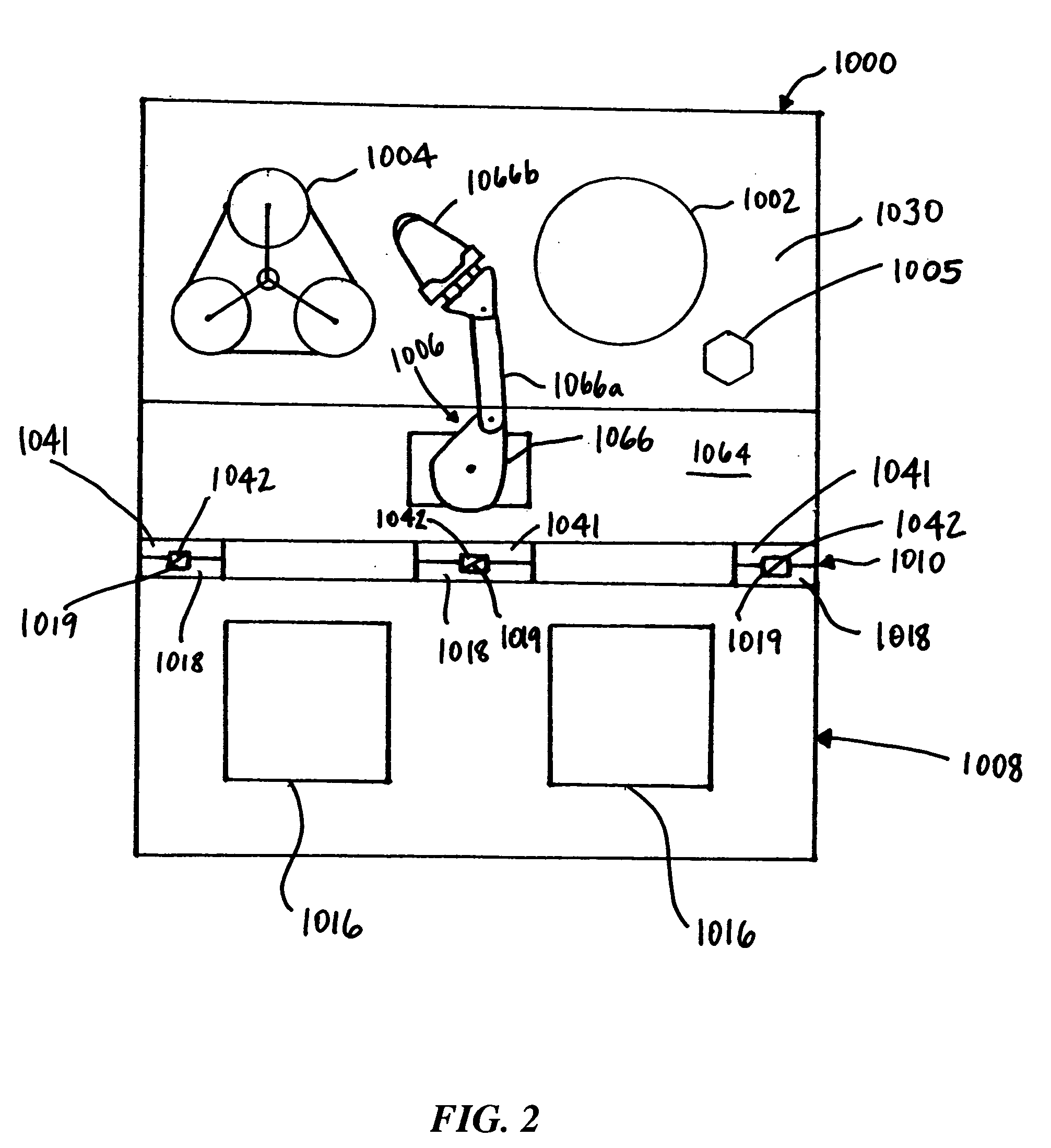Modular tool unit for processing microelectronic workpieces
a technology of microelectronic workpieces and tool units, applied in the direction of basic electric elements, semiconductor/solid-state device manufacturing, electric apparatus, etc., can solve the problems of device failure, device open or short circuit condition, device polish rate affecting the ultimate uniformity of the surface of the polished copper structure, etc., to improve the efficiency of manufacturing custom integrated tool assemblies
- Summary
- Abstract
- Description
- Claims
- Application Information
AI Technical Summary
Benefits of technology
Problems solved by technology
Method used
Image
Examples
Embodiment Construction
[0061] For purposes of the present application, a microelectronic workpiece is defined to include a workpiece formed from a substrate upon which microelectronic circuits or components, data storage elements or layers, and / or micromechanical elements are formed. Micromachines or micromechanical devices are included within this definition because they are manufactured using much of the same technology that is used in the fabrication of integrated circuits. The workpieces can be semiconductive pieces (e.g., doped silicon wafers or gallium arsenide wafers), dielectric pieces (e.g., various ceramic substrates) or conductive pieces. Although the present invention is applicable to this wide range of products, the invention will be particularly described in connection with its use in the production of interconnect structures formed during the production of integrated circuits on a semiconductor wafer.
[0062] Various embodiments of intermediate mounting modules and modular tool units for the...
PUM
 Login to View More
Login to View More Abstract
Description
Claims
Application Information
 Login to View More
Login to View More - R&D
- Intellectual Property
- Life Sciences
- Materials
- Tech Scout
- Unparalleled Data Quality
- Higher Quality Content
- 60% Fewer Hallucinations
Browse by: Latest US Patents, China's latest patents, Technical Efficacy Thesaurus, Application Domain, Technology Topic, Popular Technical Reports.
© 2025 PatSnap. All rights reserved.Legal|Privacy policy|Modern Slavery Act Transparency Statement|Sitemap|About US| Contact US: help@patsnap.com



